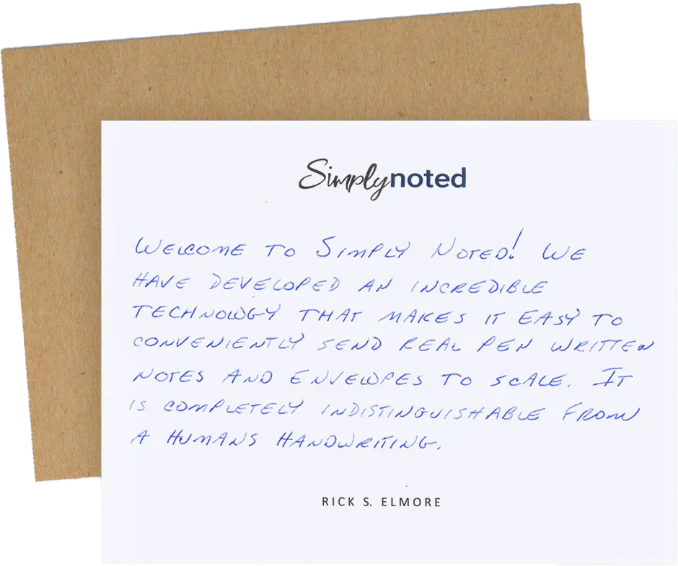Writing an Apology Letter: 15 Sample Letters & Examples for Various Reasons

Writing an Apology Letter: 15 Sample Letters & Examples for Various Reasons
When one has wronged someone, a heartfelt apology letter is an effective way to display genuine regret and attempt reconciliation. In this post, we will provide tips for writing various types of apologies to express sincere remorse and seek forgiveness from the person you have hurt through words or actions.
Key Takeaways
- The art of apologizing involves recognizing mistakes, offering sincere apologies, and providing emotional recovery.
- Crafting a heartfelt apology letter requires clear language to express regret, acceptance of responsibility, and empathy for the recipient’s experience.
- Apology letters should take into account cultural norms, demonstrate sincerity, and adhere to etiquette guidelines to be effective.
THE ART OF APOLOGIZING: WHY AND HOW
Apology letters are an essential tool for mending broken relationships and restoring bonds. Knowing how to write sincere apology letters is of utmost importance when it comes to customers, so below we outline the key steps you need: Begin by offering a heartfelt apology, acknowledge any mistakes made on your part, explain what led up to the issue without assigning blame or making excuses.
State clearly what will be done in order to resolve their situation swiftly, avoiding standard apologies, instead taking personal responsibility for all errors. Writing convincing apology letters can make a big difference in terms of putting things right again with friends or clients alike.

CRAFTING A HEARTFELT APOLOGY LETTER
When writing an apology letter, it is essential to make sure that you take full responsibility and express your regret with concise honesty. Show empathy towards the recipient’s experience, which can help them feel heard and understood. Apologize without any conditions or defending yourself – simply accept what happened and explain how your actions have had a negative impact on your life.
Include suggestions of improvements for the future so they know proactive measures are being taken to prevent similar issues from arising again. To ensure authenticity when penning apology letters, here are some tips: be mindful of people’s feelings, say sorry without qualification, and show commitment to making amends by offering ideas. Read aloud before sending (adjusting if necessary), which can help give more insight into whether its words come across as sincere or not.
PERSONAL APOLOGY LETTERS: 5 EXAMPLES
Personal apologies can be a powerful tool in mending relationships and expressing sincere regret. Here are five examples of personal apology letters for various situations, demonstrating how to communicate remorse and a commitment to change effectively.
---
Dear [Friend's Name],
I am truly sorry for my actions last night. I let my emotions get the best of me, and I said things I didn't mean. I hope you can forgive me.
---
Dear [Friend's Name],
I apologize for not being there for you when you needed me. I realize now how much you rely on my support, and I promise to be there for you in the future.
---
Dear [Friend's Name],
My dearest friend. I am deeply sorry for forgetting your birthday party. I know how important it was to you and I failed to make you feel special on your day. I promise to make it up to you.
---
Dear [Friend's Name],
I apologize for my insensitive comment. I didn't realize how it could hurt you, and I regret my thoughtlessness. I promise to be more mindful of my words in the future.
---
Dear [Friend's Name],
I am sorry for breaking your trust. I understand if you are upset with me, and I am willing to do whatever it takes to rebuild our friendship. I will do better.

PROFESSIONAL APOLOGY LETTERS: 5 EXAMPLES
Professional apologies are great for expressing sincere regret. Here are five examples of professional apology letters for various situations, demonstrating how to communicate remorse and a commitment to change effectively.
---
Dear [Recipient's Name],
I apologize for any inconvenience caused by the delay in our shipment. We understand the impact this might have had on your operations and are working diligently to rectify the situation.
---
Dear [Recipient's Name],
I'd like to apologize for the error in our recent invoice personally. We value your business and understand the confusion this may have caused. We are correcting the error immediately.
---
Dear [Recipient's Name],
I regret to inform you that there was an oversight in our product quality control. We take full responsibility and are taking steps to ensure this will not happen again.
---
Dear [Recipient's Name],
Please accept our sincere apologies for the misunderstanding during our last communication. We value your perspective and are committed to improving our contact in the future.
---
Dear [Recipient's Name],
I am sorry for the delay in responding to your email. We understand the urgency of your request and are working to provide you with a response as soon as possible.

APOLOGY LETTERS TO GROUPS: 5 EXAMPLES
When offering an apology to a group or several people, it is essential to consider the collective emotions and worries of everyone involved and each recipient’s individual feelings. Thus, you should deeply regret your actions and include this in your letter when apologizing: conveying remorse, recognizing any mistakes made, and committing yourself to changing behavior patterns going forward.
---
Dear [Group's Name],
I deeply regret the misunderstanding during our meeting. My comments were not intended to offend, and I sincerely apologize if they did. I value our relationship and will strive for better communication in the future.
---
To All Our Valued Customers,
We sincerely apologize for the inconvenience caused by the recent service disruption. We understand the impact of this on your operations and are taking immediate steps to rectify the situation.
---
Dear Team Members,
To my multiple friends. I regret my actions at the last team meeting. I understand that my behavior was unprofessional, and I sincerely apologize. I am committed to creating a positive and respectful work environment for all. These are my own words, and I honor them.
---
To Our Esteemed Community Members,
We are genuinely sorry for the oversight in our recent community event. We understand that our actions may have caused disappointment, and we are taking steps to ensure this will not happen again.
---
Dear [Group's Name],
I apologize sincerely for the comments I made in our last group discussion. They were insensitive and inappropriate, and I deeply regret any hurt they may have caused. I am committed to being more mindful of my words in the future.

THE ROLE OF EMPATHY IN APOLOGY LETTERS
In apology letters, expressing empathy is essential for conveying sincere regret to the recipient. It allows the writer of such a letter to show that they are aware and acknowledge their counterpart’s emotions.
Examples of statements that demonstrate this include “I completely comprehend your feelings,” “The difficulty you must be experiencing saddens me,” or simply saying, “My apologies for causing hurt.” Expressing sympathy through an apology note can help reestablish trust between both parties and build on existing relationships, hence why it should not be overlooked in these types of communications.
AUTOMATING YOUR APOLOGY LETTERS WITH SIMPLY NOTED
Simply Noted is a platform that facilitates the production of personalized and professional apology letters with little effort. All you have to do is provide pertinent data; then, an expressive and apologetic letter will be created in moments – helping businesses save time while still giving them a heartfelt way to apologize.
This tool enables organizations to ensure their expressions of regret are consistently personal and sympathetic – creating stronger connections between themselves, customers, or colleagues without sacrificing sincerity for convenience. Automation does not need to equate coldness; through Simply Noted, one can demonstrate genuine remorse and prove dedication towards rectifying matters correctly.
ADDRESSING CULTURAL DIFFERENCES IN APOLOGY LETTERS
When it comes to accepting responsibility and being mindful of cultural aspects in writing apology letters, displaying sensitivity towards the specific values and beliefs that are meaningful for the addressee is essential. Investigating appropriate customs or expressions that demonstrate regret according to their culture will help make your amends more sincere.
For instance, when writing an expression of contrition aimed at a foreign business partner, researching methods typically utilized by them would be advantageous to include pertinent phrases or symbols that unequivocally portray genuine understanding on your part. Customizing this letter with respect to the recipient’s traditional background offers additional proof of empathy from you as well as a commitment to rectifying any wrongdoings committed previously.

APOLOGY ETIQUETTE: DO'S AND DON'TS
It is essential to be aware of the proper ways and wrong methods when apologizing so that your regret can show and make sure people accept it. These are some essential points for a successful apology: recognizing an error, taking full responsibility, being truthful with words showing true repentance about what has happened, and delivering the expression in person if possible, which will increase its value by having actual communication rather than written ones.
Some mistakes must be avoided while apologizing, such as devaluing or ignoring any issue regarding this matter, giving excuses instead of holding oneself accountable, not meaningfully expressing hurt caused to other parties involved, or committing something impossible without fulfilling it afterward.
By considering these courtesies, one can carry out a useful appropriate atonement from which relationships could heal again once trust is mended between two individuals thanks to practical terms used during the apologetic process entirely genuine.
HOW TO FOLLOW UP AFTER SENDING AN APOLOGY LETTER
When sending an apology letter, it’s essential to follow up to keep communication flowing and ensure the recipient is content with your apology. Give a few days before pursuing contact. This allows them time for personal reflection on the matter at hand.
Check in once or twice weekly during these first weeks after, then decrease frequency but stay conscious of their response to ensure satisfactory closure was achieved from your regretful message. If they don’t reply or accept remorsefully, maintain patient poise while respecting the feelings expressed, let them take whatever amount of time needed, and be accepted even if there has been no forgiveness.
HANDLING REJECTION OR NO RESPONSE TO AN APOLOGY LETTER
The feeling can be daunting when you send out an apology letter and get no response or it is rejected. It’s essential to understand that the receiver may need time to think about your words of remorse before deciding if they are ready for forgiveness. So, remain respectful of their reactions and patience while waiting for a response.
Reflecting upon what has occurred and going over the to write an apology letter that provides greater insight into how best to handle similar situations in future instances. Take this opportunity to gain personal growth from where mistakes were made so proper apologizing skills can continue developing throughout life’s journey.

SUMMARY
Writing a sincere and meaningful apology letter is an excellent approach to repairing damaged relationships, showing remorse for mistakes, and taking accountability for your behavior. A successful best apology letter requires one to be genuine in their regret and have empathy while constructing the words of amends within the letter. Ensuring these components are expressed correctly can help restore trust between parties, whether with friends or colleagues alike.
Frequently asked questions
How do you write a good apology letter?
When writing a good apology letter, it is vital to recognize one’s mistake and express genuine regret for the situation through sincerity. An effective way of showing this remorse is by asking for forgiveness and clearly articulating your plan to fix the problem. Keep these points brief while ensuring that all relevant information about how you will solve things remains in the text.
What is a good apology example?
I profoundly apologize for the words I uttered that caused you so much emotional distress. It is with genuine regret that I recognize now how deeply my careless actions impacted your feelings and humbly ask your pardon for such inconsiderate behavior, which led to this situation.
What is a sincere apology letter?
Apology letters should be composed with genuine regret and humility. They need to reflect on the individual situation while apologizing without any exemptions or excuses given. Responsibility has to be owned up, and repentance for the results of such a mistake is also expressed in it.
An effective apology letter also needs to state why this error was committed so that reparation can be made afterward - these words have got to come from deep within. They must genuinely mean what is being said to them, not just serve as empty phrases void of actual remorsefulness.
The right keywords Are sincere apologies backed by promises of restoring things where appropriate: responsibility accepted plus regrets over specific outcomes, all stated clearly throughout each correspondence written.
How should I follow up after sending an apology letter?
Allow a few days to pass before getting back in touch, and then stay connected throughout the process. Check regularly to ensure that the written apology is accepted well by the person receiving it. Maintain communication all along to avoid missing any steps of this critical apology journey.
How can I address cultural differences in an apology letter?
To demonstrate sincere understanding, respect the culture of the person receiving your apology by including phrases and gestures that pertain to them. Show gratitude for any customs related to making amends professionally and connecting with your reader. Offer an appropriate expression of regret while expressing admiration for their background or traditions when delivering such an apology.























